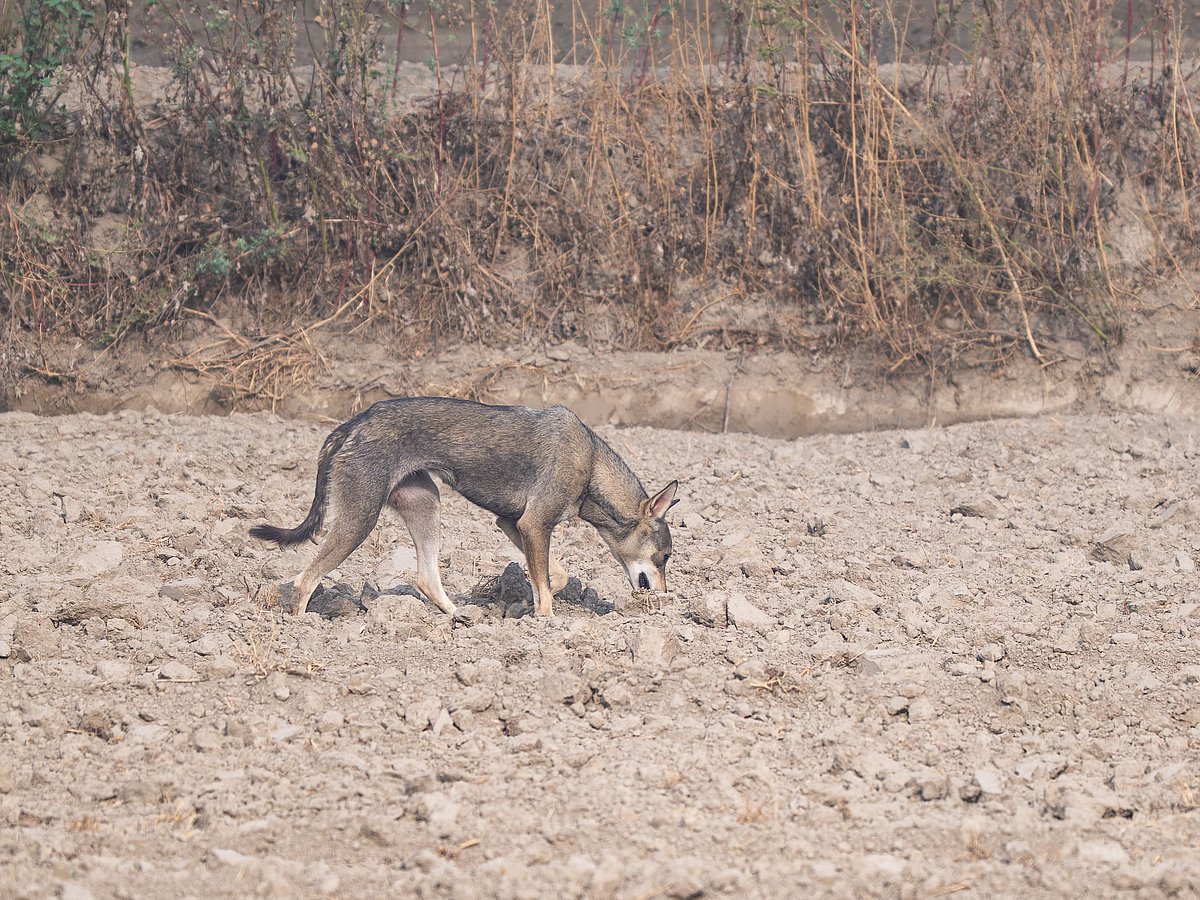Rare Sightings Alert: Indian Grey Wolf Spotted in Delhi for the First Time Since the 1940s!
First Sighting of Indian Grey Wolf in Delhi Since the 1940s: A Remarkable Return
In a surprising turn of events, an Indian grey wolf (Canis lupus pallipes) has been spotted within the borders of Delhi for the first time since the 1940s. This significant sighting was captured by wildlife enthusiast Hemant Garg on May 15, 2025, in Palla, a village situated at the confluence of Delhi, Haryana, and Uttar Pradesh along the Yamuna River. This event has sparked excitement among wildlife researchers, conservationists, and nature lovers alike, as it provides a glimpse into the area’s biodiversity and the resilience of wildlife in urban settings.
A Closer Look at the Sighting
Hemant Garg, who regularly traverses the bund road in Palla for wildlife photography, was astounded when he first observed the animal. He is known for capturing images of various nocturnal species, including leopards, hyenas, and even rusty-spotted cats. When he encountered the wolf, Garg was quick to recognize that it was not a common dog or jackal.
-
Distinct Features: Garg explained that the wolf’s muzzle was notably large and robust—characteristics that set it apart from the slimmer, more triangular shape typical of jackals. The wolf displayed a stealthy gait and immediately hid itself upon noticing Garg’s camera, settling within tall grasses in a position that indicated its predatory instincts.
- Behavioral Observations: Unlike common domestic dogs, which often approach humans or exhibit playful behavior, this creature demonstrated caution and elusiveness, hinting at its wild nature.
The Path of Discovery
After the initial sighting, Garg consulted his friend Abhishek Gulshan, a Delhi-based naturalist, who encouraged him to share the photographs with other experts. Surya Ramachandran, a renowned wolf specialist based in Chennai, was among the first to analyze the images sent by Gulshan. Ramachandran, along with other naturalists, quickly affirmed the identification of the animal as an Indian grey wolf, rather than a wolf-dog hybrid.
- Expert Opinions: Expert Bilal Habib from the Wildlife Institute of India weighed in, asserting that the animal was indeed a subadult wolf, approximately a year old. According to Habib, the small, sharp teeth and the distinctive coat of the young wolf made its identification clear. He also pointed out that while hybridization between wolves and dogs is a concern, wolf-dogs tend to remain close to human settlements rather than venturing into wild expanses.
Wolf Populations and Habitat
The Indian grey wolf is native to various regions in India, primarily found in open plains, scrubland, and deserts. Historically, their populations have dwindled due to habitat loss and hunting, making this sighting even more remarkable.
-
Habitat Insights: With the Yamuna River nearly dry in parts, leaving behind patches of ankle-deep water, suitable conditions have emerged for wildlife to thrive. Across the river lies the Baghpat district, characterized by grasslands and wooded areas, which may serve as a corridor for various wildlife, including large predators like leopards that have previously crossed into this region.
- Conservation Implications: The presence of wolves in urban settings raises important questions about wildlife conservation and the adaptability of species. Such sightings can inform future conservation strategies, highlighting the need for responsible urban planning that accommodates wildlife corridors and habitats.
Conclusion
The reappearance of the Indian grey wolf in Delhi is not only a thrilling event for local wildlife enthusiasts but also a valuable reminder of the resilience of nature even in urban landscapes. While there has been a surge in sightings of various animals in and around Delhi, this particular sighting underscores the potential for wildlife to reclaim spaces long thought lost to urbanization.
As we continue to monitor and study these occurrences, it becomes increasingly important to foster a relationship with nature that respects both the needs of wildlife and the realities of urban living. The wolf’s return may symbolize hope for biodiversity conservation efforts, empowering us to protect and coexist with the magnificent flora and fauna that share our planet.
In the coming years, it will be fascinating to see how this individual wolf’s story unfolds and whether it heralds the resurgence of more wildlife species in Delhi and beyond. As Garg eloquently summarized, "This sighting opens our eyes to the possibilities of coexisting with wildlife in our rapidly urbanizing world."






